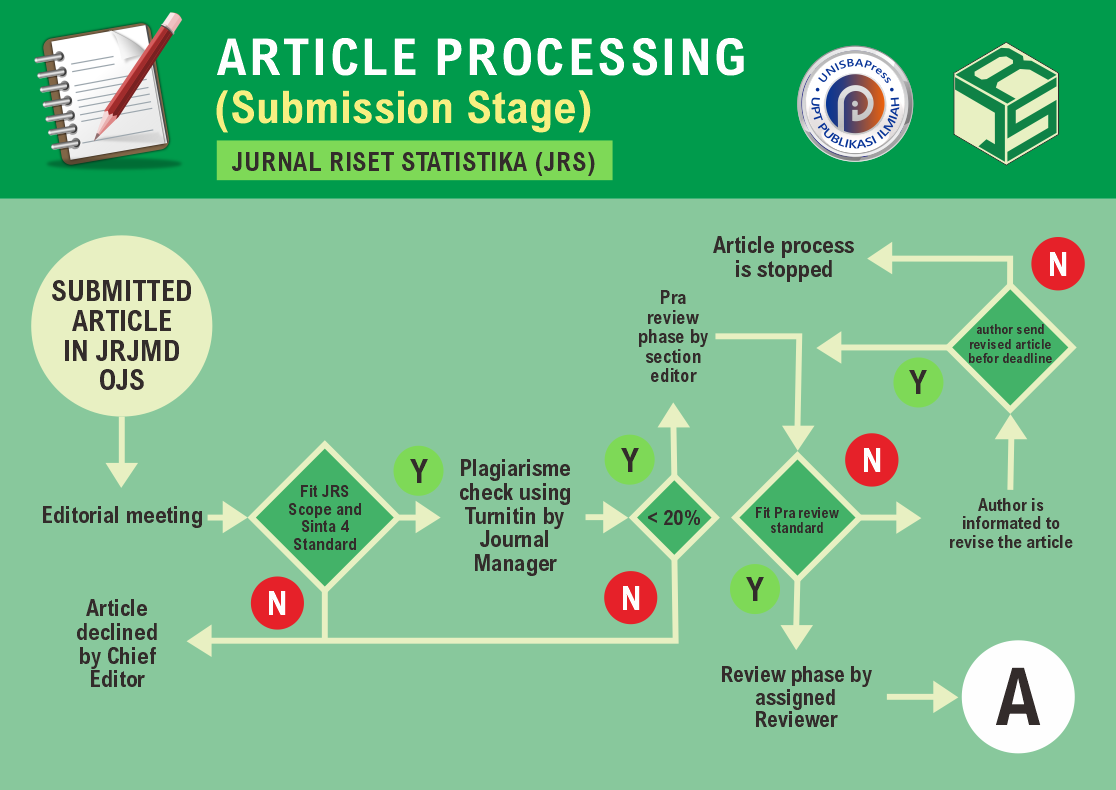Pemodelan Spatial Autoregressive (SAR-X) pada Perkawinan Usia Anak di Indonesia
DOI:
https://doi.org/10.29313/jrs.v3i1.1643Keywords:
Spatial Dependency, Prevalence Child Marriage, Spatial AutoregressiveAbstract
Abstract. The proportion of women aged 20-24 who were married or lived together before the age of 15 and before the age of 18 is defined as child marriage. Eliminating child marriage is one of the targets listed in SDGs 2030. In 2021, Indonesia will be the 2nd-ranked country for child marriage cases in ASEAN. Various studies related to child marriage in Indonesia have been conducted within the scope of individuals or households, but not much has been researched regarding child marriage in a spatially analysis. The results of the study show that there is a spatial dependency for provinces in Indonesia in cases of child marriage. Therefore, to find out more about the factors that influence child marriage in Indonesia, spatial modeling using the spatial autoregressive model (SAR-X). The variables that are influence child marriage are APS (16–18 years), the percentage of poor people, and per capita expenditure.
Abstrak. Perkawinan anak didefinisikan sebagai proporsi perempuan umur 20-24 tahun yang berstatus kawin atau berstatus hidup bersama sebelum umur 15 tahun dan sebelum umur 18 tahun. Penghapusan perkawinan anak merupakan salah satu target yang tercantum dalam Tujua Pada tahun 2021 Indonesia merupakan Negara peringkat ke-2 untuk kasus perkawinan anak di ASEAN. Berbagai penelitian terkait perkawinan anak di Indonesia telah dilakukan dalam lingkup individu atau rumah tangga, akan tetapi belum banyak yang meneliti terkait perkawinan anak dalam lingkup berbasis spasial. Hasil penelitian menunjukkan adanya dependency spatial untuk wilayah propinsi di Indonesia dalam kasus perkawinan anak. Oleh karena itu, untuk mengetahui lebih lanjut faktor-faktor yang mempengaruhi perkawinan anak di Indonesia dilakukan pemodelan spasial dengan model Spatial autoregressive (SAR-X). Adapun variabel independen yang diduga memengaruhi perkawinan anak adalah APS 16-18 tahun, Persentase penduduk miskin dan pengeluaran perkapita.
References
Kementerian PPN/Bappenas, Pilar Pembangunan Sosial, 2nd ed. Kementerian PPN/ Bappenas, 2020.
E. Pranita, “Peringkat ke-2 di ASEAN, Begini Situasi Perkawinan Anak di Indonesia ,” Kompas.com, May 20, 2021. https://www.kompas.com/sains/read/2021/05/20/190300123/peringkat-ke-2-di-asean-begini-situasi-perkawinan-anak-di-indonesia?page=all
Badan Pusat Statistik, “Pencegahan Perkawinan Anak Percepatan yang Tidak Bisa Ditunda,” Badan Pusat Statistik, pp. 6–10, 2020.
K. Damayanti, “Determinan perempuan bekerja di Jawa Barat,” Jurnal Kependudukan Indonesia, vol. 16, no. 1, p. 55, Nov. 2021, doi: 10.14203/jki.v16i1.428.
L. Rumble, A. Peterman, N. Irdiana, M. Triyana, and E. Minnick, “An empirical exploration of female child marriage determinants in Indonesia,” BMC Public Health, vol. 18, no. 1, pp. 1–13, 2018, doi: 10.1186/s12889-018-5313-0.
M. R. Natanael M. J., Fajar M. R., “Prevalence of Child Marriage and Its Determinants among Young Women in Indonesia,” Child Poverty and Social Protection Conference, pp. 1–27, 2013.
A. S. Fotheringham, “Geographically Weighted Regression White Paper,” 2009.
N. Athira and M. Herlina, “Identifikasi Faktor yang Mempengaruhi Data Driven Decision pada Pemerintah Desa Menggunakan SEM GSCA,” Jurnal Riset Statistika, pp. 145–152, Dec. 2022, doi: 10.29313/jrs.v2i2.1458.
Anselin, “CHAPTER 2,” 1988, pp. 7–8.
J. LeSage, “Spatial Econometrics Toolbox,” A companion to theoretical econometrics, p. 273, 1999.
K. Kopczewska, Applied Spatial Statistics and Econometrics. Routledge, 2020. doi: 10.4324/9781003033219.
R. Gentleman, K. Hornik, and G. Parmigiani, Notes Use R! 2008.













